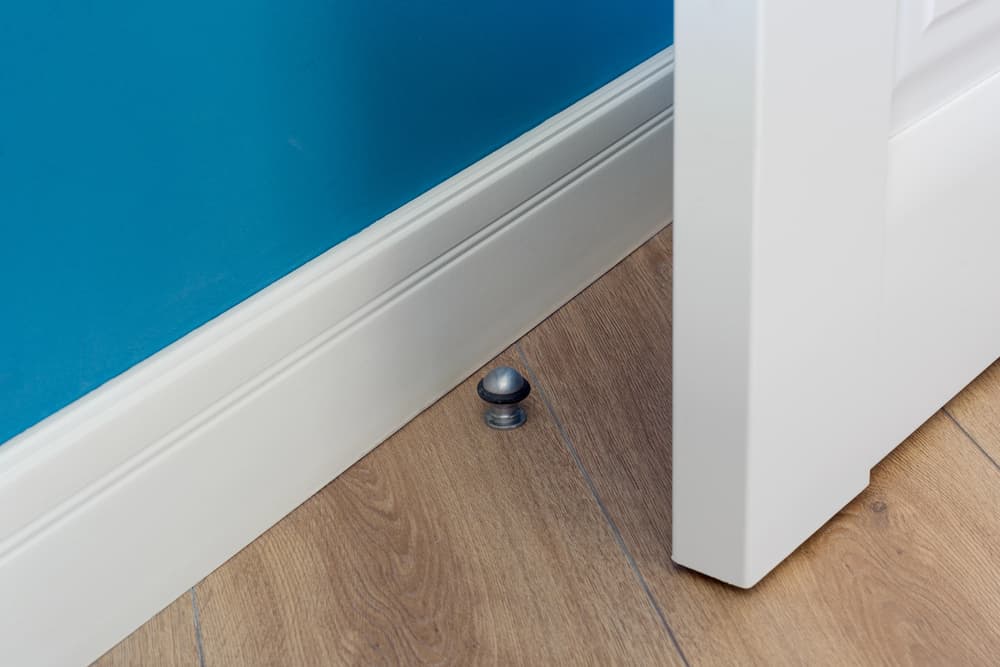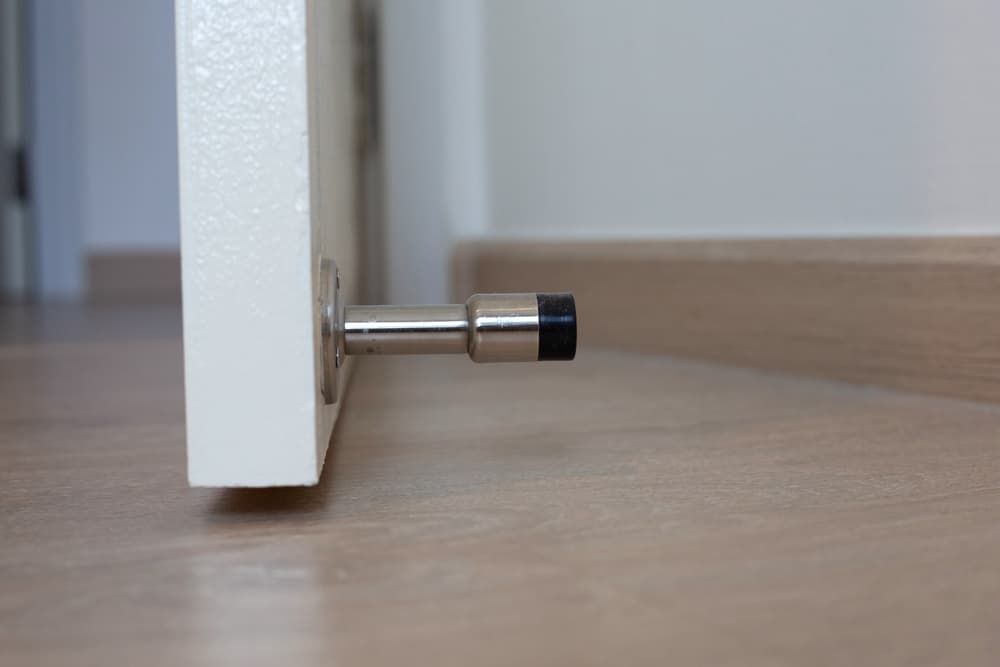Top 5 door stopper mistakes to svoid for a safer and more stylish home
Have you ever struggled with a door stopper that just doesn’t seem to work quite right? Maybe it’s constantly falling off, leaving your door swinging open, or it just looks out of place with the rest of your home’s décor. Door stoppers can be a simple yet essential part of any well-designed home, but it’s all too easy to make mistakes when choosing and installing them.
In this article, we’ll explore the top five common door stopper mistakes and provide practical solutions to help you create a safer and more stylish home. By understanding the different types of door stoppers, design considerations, and proper installation techniques, you’ll be able to select the perfect door stoppers that not only function flawlessly but also complement your interior style.
1. Choosing the wrong type of door stopper
Door stoppers come in a variety of styles and can be floor-mounted, wall-mounted, or even installed on the hinge pin of the door. Each type has its own advantages and drawbacks, so it’s important to select the one that best suits your specific needs.
Floor-Mounted Door Stoppers
These are the most common type and are placed on the floor, either near the wall or at the base of the door. They’re easy to install and can be adjusted to control the door’s swing.

Wall-Mounted Door Stoppers
These are attached directly to the wall and can be a good option for doors that don’t have enough floor space for a floor-mounted stopper or in areas where the floor is uneven.
Hinge Pin Door Stoppers
These are installed on the hinge pin of the door and can be a discreet solution, especially for doors that don’t have a lot of floor or wall space near them.
Mistake: selecting a door stopper that doesn’t suit the door type or space
One of the most common mistakes people make is choosing a door stopper that doesn’t work well with their specific door and space. For example, a floor-mounted stopper might not be the best option for a door that swings outward, as it could be easily knocked over or tripped on. Similarly, a wall-mounted stopper might not be suitable for a door that’s located in a high-traffic area, as it could become a hazard.
Solution
To avoid this mistake, it’s important to carefully consider the size, style, and usage of your door when selecting a door stopper. Measure the available floor or wall space, note the door’s swing and clearance, and consider the overall foot traffic in the area. This will help you determine the best type of door stopper for your specific needs.
For example, if you have a large, heavy door that sees a lot of use, a floor-mounted stopper with a sturdy, weighted base might be the best option. If your door is located in a tight space or swings outward, a wall-mounted or hinge pin stopper could be a better choice.
A floor-mounted stopper might not work well for a door that swings outward, as it could be easily knocked over or tripped on. In this case, a wall-mounted or hinge pin stopper would be a better solution. Conversely, a wall-mounted stopper might not be suitable for a door located in a high-traffic area, as it could become a hazard.
2. Ignoring the aesthetic impact
While functionality is the primary purpose of a door stopper, it’s also important to consider how it will impact the overall aesthetic of your space. Door stoppers come in a wide range of styles, materials, and finishes, and choosing the right one can make a significant difference in the look and feel of your home.
Mistake: Opting for a functional but unattractive door stopper
It’s easy to get caught up in the practical aspects of a door stopper and overlook its visual impact. Many people simply choose the cheapest or most readily available option, without considering how it will complement their home’s décor. This can result in a door stopper that sticks out like a sore thumb, detracting from the overall design of the space.
Solution
To ensure your door stoppers enhance rather than detract from your home’s style, take the time to consider how they will fit into your overall interior design. Look for door stoppers that complement the existing finishes, materials, and colour schemes in the room. If you have a modern, minimalist aesthetic, opt for sleek, low-profile door stoppers in neutral tones. If your home has a more traditional or rustic vibe, consider door stoppers with a vintage-inspired or natural finish.
A simple, cylindrical door stopper in a brushed brass finish can add a touch of elegance to a transitional living room, while a whimsical, animal-shaped stopper in a playful colour might be the perfect addition to a child’s bedroom. However, a bulky, plastic door stopper in a bright, primary colour could clash with the sophisticated décor of a formal dining room.
3. Overlooking proper installation
Proper installation is crucial for the functionality and longevity of your door stoppers. Whether you choose a floor-mounted, wall-mounted, or hinge pin stopper, it’s important to ensure that it’s securely mounted and positioned in the right location to catch the door effectively.
Mistake: Incorrect installation leading to poor functionality or damage
Improperly installed door stoppers can be a real headache, causing issues like doors that won’t stay open, damage to walls or floors, or even safety hazards. Common installation mistakes include using the wrong type of hardware, not securing the stopper firmly in place, or placing it in a location that doesn’t effectively catch the door.
Solution
To ensure your door stoppers are installed correctly, follow these steps:
- Measure and mark the placement: Carefully measure the door’s swing and clearance to determine the optimal placement for the stopper. Use a pencil to mark the spot where the stopper will be installed.
- Prepare the surface: If installing a floor-mounted stopper, make sure the floor is clean and level. For wall-mounted stoppers, ensure the wall surface is smooth and free of debris.
- Secure the stopper: Use the appropriate hardware (screws, anchors, etc.) to firmly attach the stopper to the floor or wall. Double-check that it’s securely in place and won’t wobble or come loose.
- Test and adjust: Open and close the door to ensure the stopper is positioned correctly and effectively catches the door. Make any necessary adjustments to the stopper’s placement or height.
Failing to use the proper hardware when installing a wall-mounted stopper can result in the stopper becoming loose and potentially causing damage to the wall. Placing a floor-mounted stopper too close to the door’s swing can cause the stopper to be easily knocked over or tripped on.

4. Failing to consider door and floor types
When selecting a door stopper, it’s important to consider the specific characteristics of your door and floor surfaces. Different materials and finishes can have a significant impact on the performance and longevity of your door stopper.
Mistake: Using a door stopper that’s not compatible with the floor or door type
Choosing a door stopper that isn’t compatible with your door or floor type can lead to a variety of issues, such as the stopper not effectively catching the door, causing damage to the floor or door, or simply not staying in place.
Solution
To ensure your door stopper is a perfect match for your home, consider the following:
Floor Type:
- Carpeted floors: Look for door stoppers with a wider base or felt pads to prevent sinking into the carpet.
- Hardwood or tile floors: Choose stoppers with a non-slip rubber or silicone base to prevent scratches or scuffs.
- Uneven floors: Wall-mounted or hinge pin stoppers may be a better option than floor-mounted.
Door Material:
- Wooden doors: Opt for stoppers with a softer, non-marking material like rubber or felt to prevent damage.
- Metal or glass doors: Choose stoppers with a harder, more durable material like plastic or metal.
- Hollow-core doors: Be cautious of heavy or bulky stoppers that could potentially damage the door.
Using a heavy, metal floor-mounted stopper on a carpeted floor could cause the stopper to sink into the carpet, making it ineffective. A plastic or rubber stopper on a hardwood floor might not provide enough grip, allowing the door to swing freely.
5. Neglecting regular maintenance
Like any household item, door stoppers require regular maintenance to ensure they continue to function properly and maintain their appearance. Over time, door stoppers can become worn, loose, or accumulate dirt and debris, which can impact their performance and lifespan.
Mistake: Ignoring signs of wear and tear or failing to clean and maintain door stoppers
Many homeowners neglect to maintain their door stoppers, leading to issues like loose or wobbly stoppers, difficulty keeping doors open, or unsightly discolouration or damage. Ignoring these problems can result in the need for costly replacements or even damage to the door or floor.
Solution
To keep your door stoppers in top condition, follow these maintenance tips:
- Inspect regularly: Periodically check your door stoppers for signs of wear, such as loose screws, cracks, or damage to the base or tip.
- Clean and Lubricate: Wipe down the stopper with a clean, damp cloth to remove any dirt or debris. For moving parts, apply a small amount of lubricant to keep them functioning smoothly.
- Tighten or adjust: If a stopper is loose or not effectively catching the door, use the appropriate tools to tighten or adjust it as needed.
- Replace worn parts: If a stopper is beyond repair, don’t hesitate to replace it. Worn or damaged stoppers can pose safety hazards and may cause damage to your doors or floors.
A floor-mounted stopper with a worn rubber tip might not provide enough grip, allowing the door to swing freely. A wall-mounted stopper with loose screws could become a safety hazard if it falls off the wall.
In this article, we’ve explored the top five common mistakes people make with door stoppers and provided practical solutions to help you create a safer and more stylish home. By understanding the different types of door stoppers, considering the aesthetic impact, ensuring proper installation, selecting compatible options, and maintaining your door stoppers, you can avoid these pitfalls and enjoy the many benefits of well-chosen, well-maintained door stoppers.
Now that you’ve learned how to avoid these common door stopper mistakes, take a closer look at your own home and assess whether your current door stoppers are up to par. If not, use the tips and resources provided in this article to upgrade your door stoppers and create a safer, more beautiful living space. Remember, even a small detail like a door stopper can make a big difference in the overall look and feel of your home.
![[AD] We went to the newly opened Cha Sha Kingston a couple of weeks ago, and wow — taste bud adventure unlocked! The boys devoured the masala fries and chicken tikka rolls, while we couldn’t get enough of that epic kebab butter curry 😍🍛.
It’s amazing value for food this tasty (and everyone left happy and VERY full!).
Delicious food, vibrant vibes and incredible value — the perfect combo for your next meal.
📍Cha Sha Kingston
43 Surbiton Road, KT1 2HG
🌐 chasha.co.uk
Other Cha Sha locations in Birmingham, Ilford, Southampton and Wembkey
#ChaSha #ChaShaKingston #KingstonEats #FoodieFinds #UKFoodie #FoodReview #KingstonUponThames #FamilyEats #FamilyDining #FoodieKids](https://suburban-mum.com/wp-content/uploads/2016/02/574770541_18560351146016840_6855048070839528040_n-180x320.jpg)

![[AD] We’re a cricket-mad family, so we’re buzzing that @thehundred is back this August! 🏏🔥
To get ready, M tried out the official FREE Activity Pack — and it’s brilliant! 🙌
Packed with fun games, creative challenges and sporty tasks, it’s perfect for getting kids hyped whether you’re at home or on the go.
👉Download yours now (link in bio)
@londonspirit @ovalinvincibles #EveryMomentCounts #TheHundred
#EnglandCricket #CricketFamily #TheHundredCricket #LondonBloggers #Cricket #CricketIsLife #kidsfun](https://suburban-mum.com/wp-content/uploads/2022/11/505472555_18531279601016840_7092520074819907569_n-180x320.jpg)



![[AD - Press visit]
We enjoyed the glorious sunshine this weekend with a trip to Brighton. We went on the @brightoni360official which is right by the sea front.
The i360 pod take a slow journey up, allowing you to take in views across Brighton and the South Downs 450ft above ground. There’s a bar inside with drinks and snacks available to purchase and the experience lasts 25 minutes.
Afterwards, we headed to the open air roller rink for a roller skating session!
The roller rink is:
⭐ Suitable for over 5s
⭐ £6.50 if you have your own skates or £9.50 if you need to hire them
⭐ 45 minutes per session
Full details to visit the i360 + skating
📍 Brighton i360, Lower Kings Road, Brighton BN1 2LN
🚗 Parking nearby (we parked in the Regency Square Car park)
🎟️ Prices start from £25.40 for an adult and £16.90 for a child
🕐 Opening hours are currently Sun-Fri 10.30am-18.30pm and until 19.30pm on Saturdays
☕️ Bar inside the i360, cafe and gift shop
Book tickets here:
https://tickets.brightoni360.co.uk/tickets/?_ga=2.195305772.1869001490.1689671753-1757164059.1689671753/#events?eventid=157](https://suburban-mum.com/wp-content/uploads/2015/04/417980235_313576471048632_3682382982231216432_n.jpg)

![[AD] ***Summer of fun at Barracudas Activity Camps!****
There is plenty for kids to do at @barracudas_activity_day_camps
From Tennis, Archery, Swimming, Motor Sports and more you can be sure that there will be something for kids aged 4.5-14. ⚽🏈🥅🎾🏓🏎️🏹🏊♂️🏉
You can book on a day by day basis - so it can fit in with any other days out/activities you have planned and there are early drop off and late pickup options available. Barracudas are also Ofsted registered so you can use your Childcare Vouchers too.
⭐⭐⭐Get £20 off a week or £4 off a day using my discount code: MARIA20⭐⭐⭐
#BarracudasActivityDayCamp #BarracudasActivityCamp #BarracudaAmbassadors #SummerHolidays #SchoolHolidays #Summer2023 #SummerCamp #DayCare #Camp #KidsCamp #surreymummy #surreymums #SummerOfFun #ActivityCamps #HolidayCamps #Childcare #SchoolHolidays #schoolholidaycamps](https://suburban-mum.com/wp-content/uploads/2024/07/353583570_625625966167953_545896259645102575_n.jpg)



![[AD] We have some super exciting news...we have been chosen to be Laser Quest Ambassadors, and the boys are over the moon!
We are really lucky that our local Laser Quest (@laserquestkingston) is just around the corner from us. It means we can pop in of a weekend or anytime during the school holidays, and with summer just around the corner, I know Laser Quest will be one of our go-to places for some family fun.
As well as games of Laser Quest, there are also VR experiences and arcade amusements too. To find out a bit more about how Laser Quest works, you can read my blog post: https://www.suburban-mum.com/laser-quest-kingston/ (clickable link in bio)
Don't forget to keep an eye out for our Laser Quest posts - I'm going to be giving away two family passes to use at Laserquest Kingston!
If you can't wait and want to head down to Laser Quest to try it out, use the code SUMMER30 for 30% off your booking. The code is valid from now until the end of August 2023 and can be used on Laser Quest games and birthday party bookings.
#LaserquestAmbassador #Laserquest #LaserquestKingston #ActivitiesForKids #FamilyFun #DaysOutWithKids #Lasertag #LaserquestVR #Kingston #ThingsToDoInKingston #SurreyFamilyDaysOut #ThingsToDoWithKids #RainyDayFun #SurreyMummy #SurreyLife #LifeWithKids #LifeWithBoys #familyfunday](https://suburban-mum.com/wp-content/uploads/2015/04/353230107_797358078406942_2405522556733455165_n.jpg)

![[AD] The sun has finally made an appearance and the boys have been making the most of it by spending it
in the garden.
They’re go-to is always football and they’ve been trying to improve their aim and accuracy with the new Messi Foldable Footlball goal from the #MessiTrainingSystem range.
I love the fact the goal is foldable, making it easy to store away when not in use. It is also lightweight so you can effortlessly pack it up and take it to the park or to a friend’s house.
The Messi Foldable Football Goal retails at £36 and can be purchased from @argos
You can read my full review here: https://www.suburban-mum.com/messi-foldable-football-goal/
#TrainLikeMessi #FoldableFootballGoal #FootballSkills #OutdoorFun #LionelMessi #LeoMessi #FootballAtHome #OutdoorKids #JustGetOutside #OutdoorsAndFree #ScreenFreeKids #WhateverTheWeatherKids @flair_gp](https://suburban-mum.com/wp-content/uploads/2015/04/341194882_615024710178056_41977149395989448_n.jpg)

![[AD] We are absolutely thrilled to announce that we are Barracuda Ambassadors again this year.
With Easter just around the corner, the boys were sent the @barracudas_activity_day_camps new camp kit in preparation for the school holidays.
There’s a wide range of activities for kids aged 4.5 - 14 including Tennis, Archery, Basketball, Arts & Crafts and more.
If you like the sound of Barracudas, find out more over on their website. You can also save £20 a week or £4 a day, using my discount code: MARIA20](https://suburban-mum.com/wp-content/uploads/2024/07/336812306_765234558514317_685553691647241974_n.jpg)


![[AD - Gifted]
Last weekend we were invited to try out @tsarettaspice’s new Bottomless Brunch menu and I can tell you it was thumbs up all round!
There’s a good choice tapas on offer from Punjabi fish fingers, Indo Chinese Chicken to Spiced Lamb Scotch Eggs and Manchurian Cauliflower (which was amazing!)
If you’re local to Twickenham and fancy giving them a try here’s are the details.
Tsaretta Spice Bottomless Brunch
⭐️£37.50 per head for bottomless Prosecco or cocktail of the day
⭐️£55 per head for bottomless Champagne
⭐️ Food included: 4 tapas selections and dessert or 2 tapas selections, a pav or naanwich and dessert
⭐️ Non-alcohol brunch is also available
Tsaretta Spice
55 Church Street
Twickenham
TW1 3NR
You can also read our full review over on the blog (link in bio)](https://suburban-mum.com/wp-content/uploads/2024/07/334565436_5960402314015030_663031098700829518_n.jpg)



